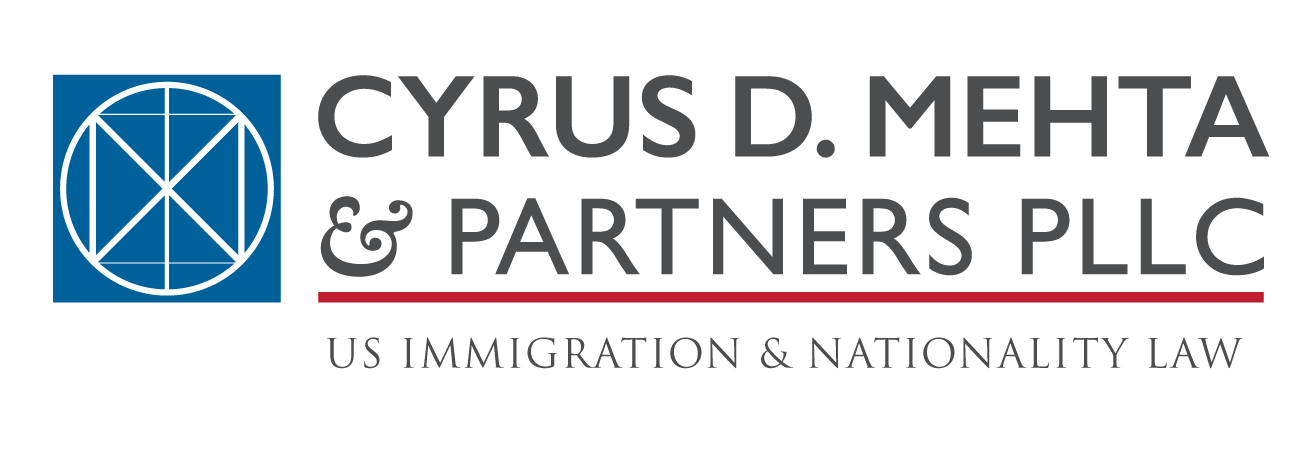H-1B VISA CRISIS: USCIS ANNOUNCES THAT CAPS HAVE BEEN REACHED
by
Cyrus D. Mehta*
In a statement released on April 10, 2008, the United States Citizenship & Immigration Services (USCIS) announced that based on a preliminary count, it has received “nearly 163,000” total H-1B petitions out of which “more that 31,200” were subject to the H-1B Master’s 20,000 cap.
The USCIS will soon conduct a randomized selection of the H-1B petitions that it has received. Petitions filed under the H-1B Master’s cap have about a 64% chance of being selected under lottery. Those not selected under the Master’s cap will then be selected under the 65,000 cap. The chances for a Master’s cap holder are thus even higher since he or she can also hope for selection under the 65,000 cap. Those who have filed under the 65,000 cap stand about a 45 to 50% chance of being selected.
Prior to the cap announcement, the Department of Homeland Security (DHS), on April 8, 2008, promulgated an interim final rule in the Federal Register (Vol. 73, No. 68; 18944-18956), increasing the Optional Practical Training (OPT) by 17 months for F-1 nonimmigrant students who are already in their 12-month OPT period. This benefit will only be limited to students who have completed a science, technology, engineering or mathematics (STEM) degree and accept employment with employers enrolled in USCIS’ E-Verify employment verification program. The rule also requires F-1 students with an approved OPT extension to report the following changes to the DSO within 10 days of any change in the:
- Legal name;
- Residential and mailing address;
- E-mail address;
- Employer name;
- Employer address;
- Job title or position;
- Supervisor name and contact information;
- Employment start-date; and
- Employment end-date
- The student must also report to his or her DSO every six months, confirming the information listed above; even if there have been no changes;
- The requirement to report continues if the student’s 17-month STEM extension is extended further by the automatic cap-gap extension.
The rule further requires an employer of the STEM student, with the extended OPT, to report to the DSO within 48 hours after he or she has been terminated from, or otherwise leaves, his or her employment with that employer prior to end of the authorized period of OPT.
The USCIS has also released a Q&A on this topic. Students who have obtained degrees in the following fields will qualify for this benefit:
- Actuarial Science
Computer Science: (except Data Entry/Microcomputer Applications)
Engineering
Engineering Technologies
Biological and Biomedical Sciences
Mathematics and Statistics
Military Technologies
Physical Sciences
Science Technologies
Medical Scientist (MS, PhD)
The student must file the latest version of Form I-765 with USCIS, Form I-20 endorsed by the DSO, a copy of the STEM degree and the application fee.
This rule also ameliorates the “cap gap” problem by extending the authorized period for all F-1 students who have properly filed an H-1B petition under the next fiscal year cap and a change of status request. If the H-1B petition is approved, the student will have an extension that enables him or her to remain in the US until the requested start date indicated on the H-1B petition, which is October 1, 2008. At present, if a student’s practical training expires on June 30, 2008, and his or her employer’s H-1B petition has been accepted under one of the H-1B caps, this student is unable to start working until October 1, 2008, which is the effective date of the H-1B petition under fiscal year 2009. He or she may also need to leave the US at the completion of the 60-day grace period, August 30, 2008. Under the new rule, a student would be able to continue to remain in OPT status and work until October 1, 2008. This automatic extension terminates when the USCIS rejects, denies or revokes the H-1B petition.
The new rule comes as a benefit at a time when there is such an acute shortage of H-1B visa numbers by extending the practical training period for an additional 17 months and providing relief for those caught in the “cap gap.” Employers of STEM students would get two chances at filing for an H-1B visa in the event that it is rejected in the prior fiscal year. In addition to the 17 months OPT extension, a STEM student could get even a few extra months if the employer files an H-1B petition for the next fiscal year, and he or she is caught in the “cap gap.” It is disappointing, though, that the rule is limited only to STEM graduates. While it is understandable that the government wishes to retain its competitive advantage in various STEM fields, other graduates have been and continue to be capable of equally contributing to the US.
The US stands to gain if it can retain, for example, graduates in finance or business. Many business leaders in Wall Street firms and Fortune 100 corporations initially came to the US as foreign students. This author strongly advocates that the 17-month extension should not be limited to STEM graduates, but it should apply to all students with degrees in specialized fields who can otherwise qualify for an H-1B visa. The public may comment on this interim rule until June 9, 2008.
Moreover, the E-Verify program has various pitfalls. In addition to allowing the DHS to review the records under Form I-9 requirements, it can review any employment record as well as interview employees. According to a study by the CATO Institute, the E-Verify system would be ineffective, invasive and costly. It would greatly impinge on the privacy of American citizens and it would also result in glitches and errors resulting in job deprivations not only to foreign nationals but also to American citizens. The entire report can be found at www.cato.org.





Leave a Reply
Want to join the discussion?Feel free to contribute!